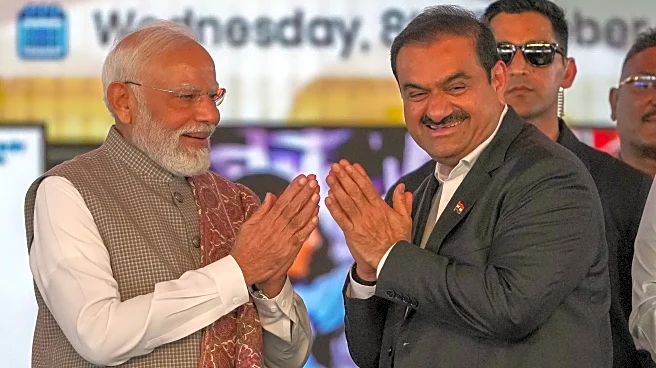What's Happening?
Bharat Sanchar Nigam Limited (BSNL), India's state-run telecom operator, has announced plans to upgrade all its 4G towers to 5G within six to eight months. This ambitious move will rely entirely on India's homegrown telecom stack, developed by C-DOT, Tejas Networks, and Tata Consultancy Services (TCS). The upgrade aims to enhance connectivity across India, leveraging indigenous technology to reduce dependence on foreign vendors. BSNL's subscriber base currently reaches 91 million, with its 4G footprint expanding significantly over the past year. The operator plans to roll out 5G services in major cities like Delhi and Mumbai by December 2025, with equipment performing well during testing and ready for commercial deployment.
Why It's Important?
BSNL's rapid upgrade to 5G is significant for India's telecommunications industry, as it demonstrates the country's capability to develop and deploy advanced technology independently. By relying on a homegrown telecom stack, India reduces its reliance on foreign vendors, potentially leading to greater technological sovereignty and innovation. The upgrade is expected to improve connectivity and network performance across the country, benefiting millions of users and supporting the growth of India's digital economy. As India boasts one of the fastest 5G rollouts globally, this development positions the country as a leader in next-generation connectivity, potentially attracting investment and fostering technological advancements.
What's Next?
BSNL's plans to roll out 5G services in Delhi and Mumbai by December 2025 indicate a significant step forward in its network upgrade efforts. As the equipment used for the indigenously developed network has performed well during testing, the operator is preparing for commercial deployment. The successful rollout of 5G services in major cities could pave the way for further expansion across India, enhancing connectivity and supporting the growth of the digital economy. The government's commitment to strengthening BSNL's network infrastructure through additional capital injections suggests continued support for the operator's efforts to advance its technology and improve service delivery.













